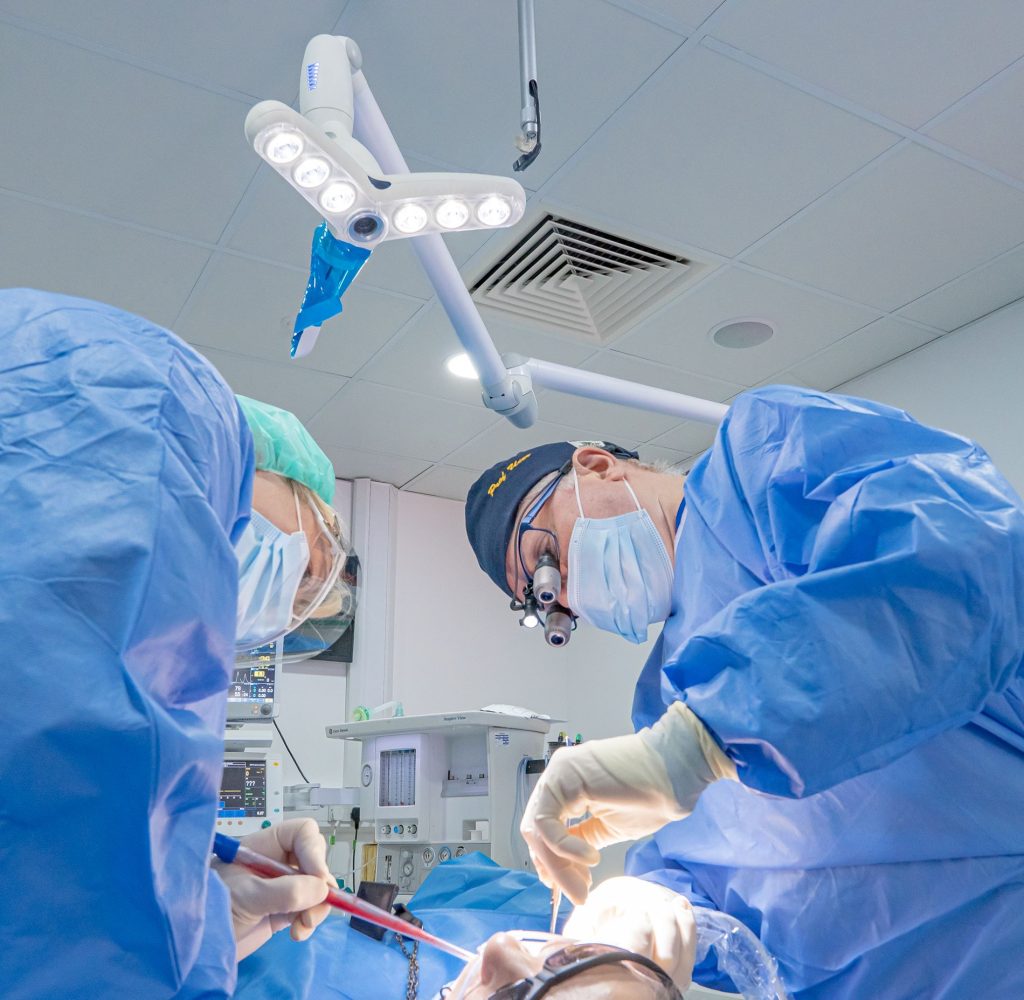Zygomatic implants – treatment of the atrophic maxilla
Featured Products Promotional FeaturesPosted by: Dental Design 27th June 2023

For many patients, conventional dental implants are the ideal solution for their edentulism. However, there remains a cohort of patients whose severe disuse atrophy makes them unsuitable for regular implant treatment. With the ever-increasing popularity of implants as a solution, and an aging population with rising numbers of complicating factors, finding alternative treatment pathways is only going to become more important. Site specific implants including zygomatic implants, pterygoid, trans-sinus and nazalus implants, as well as patient specific 3D custom printed titanium implants, are now available as evidence-based, safe and reliable treatment options for the rehabilitation of the atrophic edentulous patient.
Dental implants fundamentally depend on osseointegration for their success. Many factors can impact the success of osseointegration, and potentially compromise it in the long-term. On a basic physical level, the dimensions of the implant hold influence over how load is distributed. The more implant surface area is in contact with surrounding bone, the less stress is proportionately transferred.[1] That said, larger implants are not always suitable and provided that the patient fits specific criteria, shorter modern implants are a promising treatment.[2]
All things being equal, osseointegration success in the maxilla is notably lower than in the mandible (though success rates overall remain very high). Fundamentally, the quality and quantity of maxillary bone, particularly in the posterior region, is generally inferior to mandibular bone for long-term implant success.[3] This deficit is the case even when the bone is in a healthy state, but can be further exacerbated due to illness and long-term complications, such as failing implants due to advanced peri-implant disease. Lower diameter implants placed in the posterior region can potentially cause excessive bone loss due to comparatively higher amounts of stress being transferred to them than to a broader implant.
Zygomatic implants are substantially longer and wider than the largest conventional dental implants, providing increased stability compared to traditional types. The zygomatic bone itself is sturdy and dense tissue, which can provide improved stability for dental implants. This is particularly important for patients who have suffered significant bone loss and need a solution that will provide a stable foundation for their new prosthesis.
 In some cases, such as when severe resorption and remodelling has occurred, a bone graft may be called for in order to rebuild sufficient volume for conventional implants. While this can still be employed in conjunction with zygomatic implants (such as with the extended sinus elevation technique), under the right circumstances the structural strength of the zygoma can facilitate simpler, more streamlined treatment.[4]
In some cases, such as when severe resorption and remodelling has occurred, a bone graft may be called for in order to rebuild sufficient volume for conventional implants. While this can still be employed in conjunction with zygomatic implants (such as with the extended sinus elevation technique), under the right circumstances the structural strength of the zygoma can facilitate simpler, more streamlined treatment.[4]
Because zygomatic implants can compensate for insufficient bone without augmentation procedures, the approach is of special relevance to patients who have lost substantial tissue and function due to conditions such as oral pathology, disuse atrophy or peri-implant diseases.
Zygomatic implants are placed using 3D computer aided planning and guided surgical techniques and immediately loaded using provisional prostheses in a single surgical procedure, reducing treatment time. Unlike conventional dental implants, which often require several months of healing and osseointegration, zygomatic dental implants can be placed and loaded within a shorter timeframe. This can be particularly beneficial for patients who need to replace missing teeth urgently, and allows aesthetics to be restored faster with fewer appointments, which naturally tends to be appreciated by patients.
While zygomatic implants can provide a treatment pathway for patients who are unsuitable for conventional dental implants there are still contraindications, many of which overlap. These include on-going acute sinus infections and uncontrolled systemic diseases such as diabetes.[5]
Zygomatic procedures, and the type of cases that generally require them, need advanced training for the clinician. There are potential complications that can occur due to penetration of the sinus, or in rare instances invasion of the orbit. If you feel your patient would benefit from a zygomatic implant, but are currently not in a position to offer the treatment yourself, you might consider referring them to the Centre for Oral-Maxillofacial and Dental Implant Reconstruction. The highly experienced team, based at the international ZAGA centre in Manchester, are led by Specialist Oral Surgeon Professor Cemal Ucer and utilise the renowned Zygoma Anatomy-Guided Approach (ZAGA). This technique has been developed to minimise complications and provide the best possible outcomes for patients by refining the technique according to individual anatomical differences. Particular care is taken to preserve sinus membrane integrity, perforation of which can result in sinus complications.[6]
In summary, zygomatic dental implants can provide a valuable alternative for patients who have suffered significant jawbone loss and do not have enough healthy jawbone for conventional dental implants. By offering a solution that can provide improved stability, a shorter treatment time, and a minimally invasive approach, zygomatic dental implants can help clinicians provide more of their patients with a functional and aesthetic solution for missing teeth.
Zygomatic, pterygoid and customised implant treatment training is available for beginners and experienced implant surgeons in this field of dental implantology at ICE Postgraduate Dental Institute.

Please contact Professor Ucer at ucer@icedental.institute or Mel Hay at mel@mdic.co
01612 371842
[1] Kowalski J., Lapinska B., Nissan J., Lukomska-Szymanska M. Factors influencing marginal bone loss around dental implants: a narrative review. Coatings. 2021; 11(7): 865. https://doi.org/10.3390/coatings11070865 February 13, 2023.
[2] Rameh S., Menhall A., Younes R. Key factors influencing short implant success. Oral and Maxillofacial Surgery. 2020; 24: 263-275. https://doi.org/10.1007/s10006-020-00841-y February 13, 2023.
[3] Ramalingam S., Al-Hindi M., Al-Eid R., Nooh N. Clinical evaluation of implant survival based on size and site of placement: a retrospective study of immediate implants at single rooted teeth sites. The Saudi Dental Journal. 2015; 38(2): 105-111. https://www.ncbi.nlm.nih.gov/pmc/articles/PMC4459117/ February 11, 2023.
[4] Hinze M., Vrielinck L., Thalmair T., Wachtel H., Bolz W. Zygomatic implant placement in conjunction with sinus bone grafting: the “extended sinus elevation technique.” a case-cohort study. The International Journal of Oral & Maxillofacial Implants. 2013; 28(6): 376-385. https://doi.org/10.11607/jomi.te18 February 15, 2023.
[5] Grecchi F., Bianchi A., Siervo S., Grecchi E., Lauritano D., Carinci F. A new surgical and technical approach in zygomatic implantology. Oral Implantology (Rome). 2017; 10(2): 197-208. https://www.ncbi.nlm.nih.gov/pmc/articles/PMC5965068/pdf/197-208.pdf February 15, 2023.
[6] Aparicio C., Polido W., Zarrinkelk H. The zygoma anatomy-guided approach for placement of zygomatic implants. https://doi.org/10.1016/j.cxom.2021.05.004 February 12, 2023.








